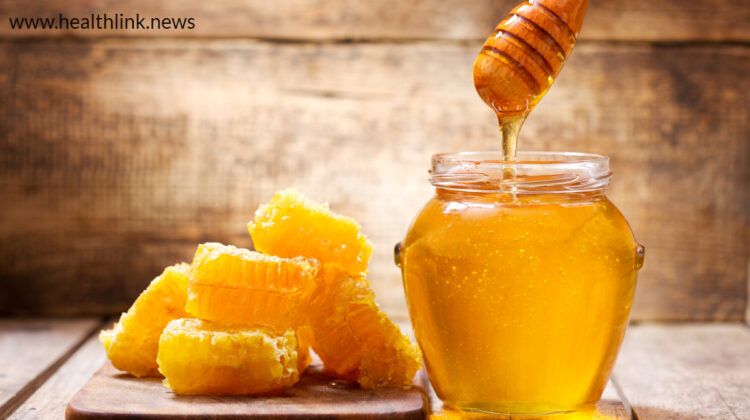Raw Honey vs Regular Honey: Which One is Healthiest?

Is raw honey more healthful, and what are the differences between it and regular honey? Raw honey is unfiltered, unprocessed honey that comes directly from the hive. It is rich in enzymes, vitamins, and minerals. Regular honey has been filtered or refined over time to remove impurities, dead bees, and wax. Health professionals agree that both types of honey provide similar nutritional value.
What is the difference between raw honey and regular honey? Let’s find in this article about, uses, benefits, and risks.
One tablespoon of honey contains:
- Calories: 64
- Protein: 0 grams
- Fat: 0 grams
- Carbohydrates: 17 grams
- Fiber: 0 grams
- Sugar: 17 grams
Honey contains some vitamins and minerals in trace quantities, including small amounts of:
- Iron
- Zinc
- Potassium
Raw Honey vs Regular Honey
Raw honey has made a comeback, as people are becoming more aware of its rich medicinal properties. However, it’s important to distinguish raw honey from processed honey, which can have its own set of potentially undesirable effects. Raw honey is the honey closest to its original state. Let’s take a closer look at how raw honey compares to regular honey and why you want to include raw honey in your diet when possible.
What is raw honey?
The nectar of the flowers and plant resin is what gives honey its distinctive flavor. Raw honey is extracted directly from honeycombs in the hive, using a process that is the same as it has been for thousands of years. Raw honey is also known as ‘unheated’, ‘untreated’, and ‘unfiltered’ honey, and contains a wide array of natural properties, and benefits.
What is regular honey?
Pasteurization is a process that involves heating the honey. The process improves the honey’s appearance, increases shelf-life, and kills yeast cells that can affect the taste of the honey. However, some people claim that the pasteurization process may also lower the number of antioxidants and other nutrients in regular honey.
How do they differ?
How do raw honey and regular honey differ? Raw honey is more nutritious than regular honey, some small studies suggest that raw honey may offer extra health benefits. Raw honey tends to be less filtered than regular honey, which means it may be slightly cloudier or have more variation in color, and texture.
Raw honey is the natural product of bees’ hard work. It contains many nutrients and beneficial enzymes, which are all destroyed by pasteurization. However, that is where the similarities end. Nutrients and enzymes vary depending on what flowers the bees have visited.
Raw honey contains a wide variety of nutrients
Raw honey is delicious and nutritious food. It contains a wide variety of nutrients. It has approximately 22 amino acids, 31 different minerals, and a wide range of vitamins and enzymes. These nutrients are only present in trace amounts.
Raw honey is unprocessed and unpasteurized, with most of its nutrients intact. It contains a wide variety of nutrients including vitamins, minerals, amino acids, enzymes, and others. Raw honey is known to have antioxidant properties some belief help protect body cells from oxidative damage.
On top of providing, you with antioxidants, raw honey also has a whole host of other impressive health benefits, including reduced inflammation and a lower risk of heart disease and certain cancers. Conversely, commercial honey may contain fewer antioxidants due to processing methods. Some of these antioxidants include phenolic acids, flavonoids, hemic and fulvic acids, gluconic acid, vitamins (including B3, B5, B6, and B9), minerals (including calcium, magnesium, phosphorous), short-chain fatty acids, and amino acids.
Recently, a study found that minimally processed honey contained levels of antioxidants and minerals that were like those found in raw honey. The study, which was published in the Journal of Food Science, looked at how various types of honey were processed, including some that were not processed at all.
Most Regular Honey Doesn’t Contain Any Pollen
Pollen Honey is a delicious, healthy alternative to regular honey. As collecting honey from hives where the bees have had direct access to flowering plants and herbs with rich pollen sources. Resembling fine powder or a light brown granular texture, Pollen Honey adds an interesting dimension to your breakfast cereal or oatmeal.
You can get a boost of energy and sustain your vitality by having one tablespoon of delicious and nutritious honey varieties in the morning. Bee pollen is surprisingly nutritious. It contains over 250 substances — including vitamins, amino acids, essential fatty acids, micronutrients, and antioxidants. Ultimate Pollen contains the highest concentration of these nutrients, making it the healthiest choice.
It may come as a surprise that most regular honey is not made from the nectar of flowers. It is common for regular honey to be made from sugar water. Bee pollen, on the other hand, is all-natural and contains pollen, vitamins, minerals, and enzymes that are naturally found in flowers. A recent study even found bee pollen to have positive properties in helping to fight against heart disease.
This is real honey, straight from nature. It has not been processed and it has not lost all its natural nutrients. You will be amazed by what raw honey can do for your health, your immune system, and even your energy levels!
Regular Honey May Have Hidden Sugars or Sweeteners
Harmonized Honey eliminates most of the risk of consuming contaminated honey because it is made from only unprocessed, 100% natural honey. This means that Harmonized honey is pure honey, without added sugars or sweeteners, so you can be sure your body will use all the nutritional benefits honey has to offer.
Honey is a delicious and healthy spread that is all-natural. However, even the purest honey can be contaminated with sugar or other sweeteners like high fructose corn syrup, which can cause numerous nutritional deficiencies, liver dysfunction, and intestinal disorders. Locally sourced honey may not have any of these additives.
Potential Health Benefits
Did you know that raw honey may offer some health benefits? The bee pollen and bee propolis in raw honey may have antioxidant and anti-inflammatory properties. Raw honey also contains vitamins, minerals, and enzymes.
In contrast to honey that is heated, pasteurized honey can be found in nearly every grocery store. Honey that is not heated during pasteurization sometimes retains the health benefits of raw honey.
Raw honey may contain natural ingredients that regular honey does not. So raw honey may offer more powerful health benefits, in terms of healing wounds and fighting infections than regular honey.
Is raw honey organic?
Some varieties of raw honey are considered organic. Organic honey has undergone processing and pasteurization to remove harmful bacteria found in the liquid. Raw honey is a thick, sticky substance that contains bee pollen and other beneficial ingredients. If a person is looking for honey that contains these ingredients, they will need to make sure that the label states “raw.”
Risks
Although you may be tempted to give honey to your baby, you should know that infants under 12 months old should not eat honey. Infants one year or younger can become seriously ill from eating too much honey. It is safe for people to consume both raw and regular honey, though it is a good idea to avoid types of honey that contain added sugars (like corn syrup).
Pure honey is safe for most people over the age of one. However, infants under one year old should not eat any honey, including raw and organic honey. A baby’s digestive tract has not yet developed enough to fight off the bacteria found in this sweet treat.
Raw honey can be taken for several health benefits, including using it to treat allergies caused by pollen. However, people with severe pollen allergies should speak with a doctor or allergist before consuming raw honey.
How to find the healthiest honey
Regular honey looks very clear and smooth, while raw honey tends to have a mixture of colors and a cloudy or creamy appearance. Just remember that the color is not an indication of its quality.
Raw honey is honey in its purest form. It is never heated or strained to remove pollen, making it natural and one of the healthiest types of honey to eat. Regular honey tends to have more ingredients than raw honey, apart from sweeteners such as sugar – it might also have been heated, pasteurized, and homogenized so that the consistency is smoother.
The taste of raw honey is different from that of regular, commercial honey. Raw honey contains pollen, which gives it a slightly earthy sweetness while regular honey has very little or no pollen, giving it a milder flavor. Though raw honey may crystallize sooner than processed honey, this does not affect its quality.
